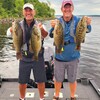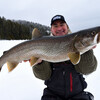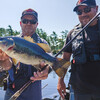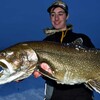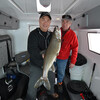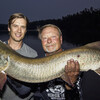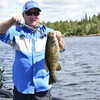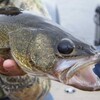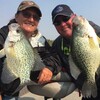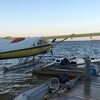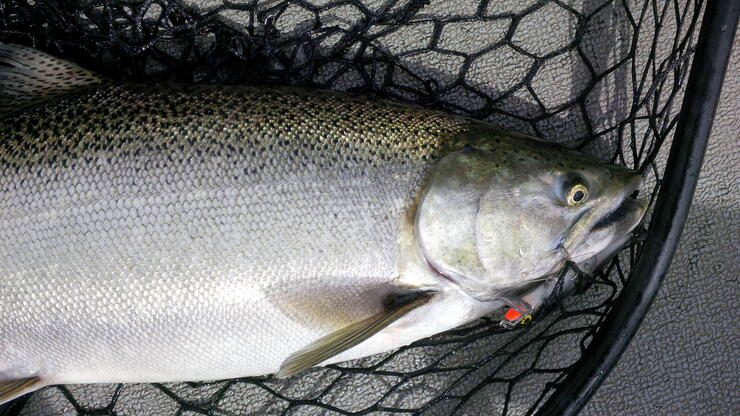
Big Water, Big Fish
One of the hardest-fighting and most prized fish on the north shore of Lake Superior is not native to it. The chinook salmon is an immigrant from the Pacific Ocean, introduced by man to provide sport. One only has to visit the launch at Alexander's Dam, on the Nipigon River, in late August or early September, to see this play out. Dozens of boats will be trolling around for salmon, and if the bite is good, it can be a real three-ring circus. Salmon are in the Nipigon River nearly year-round these days. Yet autumn is the key time. Let's examine some of the techniques and peculiarities of chinook salmon fishing in Superior's largest tributary.
The first thing to understand about salmon in the Nipigon River is that they are only present in the river below Alexander's Dam. This dam is the end of the line for salmon coming up the river from Lake Superior. There is no fish ladder or lift. Because of this, the tailwater of the dam tends to be a congregation area for salmon, although they usually spawn downstream of it. The other thing to know is that there are some salmon present in Superior's largest tributary 12 months of the year. The year-round presence of salmon is just one of the many strange mysteries of the Nipigon and its unique fishery.
Salmon Location
Salmon can truly be found in nearly every section of the lower Nipigon, including the deep, long runs that look like they should be devoid of fish. Salmon in the Nipigon are not predictable. While the majority of fish hold deep and avoid the edges, I've also found them very shallow and hanging out where brook trout should be living. Two summers ago, I was fishing on the lower river for brook trout, and we were working tight to shore. I saw some movement near the bank, under a tree, but the fish was too dark and large to be fontinalis.
"Cast your spoon to that pine and work it back slow," I said to my partner. He pitched his silver Little Cleo to shore, gave it a couple of cranks and the fish turned and inhaled it. The next couple of minutes were sheer bedlam, as my partner was using a relatively light tackle, and the current was strong. The fish was a nice, bright ten-pound male chinook, perfect for the table. You can never assume where Nipigon salmon will be.
With that being said, the majority of "biter" salmon will hold at the tail or head of the long pools in the Nipigon. If the river is not too busy with boats, you have a very good chance of hooking up with a fish on the first pass - or cast - if it's there. Nipigon salmon, especially bright, silver fish just in from the lake, are very aggressive. They will take a crack at just about anything that comes into their strike window. Unfortunately, salmon are very boat-shy, and the constant noise and shadows of people driving overhead definitely slow down the bite. Spooked salmon tend to get skittish and will go into deeper water. These fish are still potentially catchable, but they are much tougher nuts to crack.
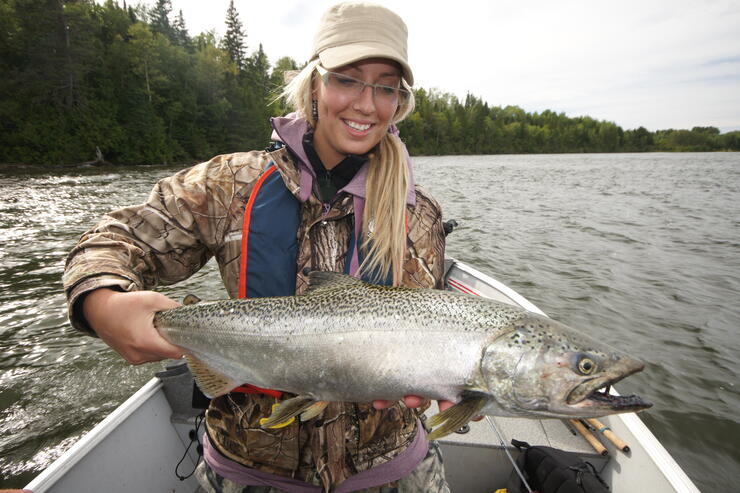
One tried and true way to get salmon that are more aggressive, overall, is to fish at first and last light. From what I've seen over the years, there's little doubt the early bird gets the fish. If you are committed enough to get up really early and put the boat in before first light, I'd estimate your chance of hooking up a Nipigon River salmon goes up 100%. These fish are light-shy, and that very first crack of morning sees them both aggressive and unafraid. I know of anglers who only fish the first hour or two of the day and then pack it in.
Salmon Tackle And Lures
The vast majority of salmon caught in the Nipigon River are taken by trolling. This technique simply puts the lure in the water longer over the greatest amount of real estate. The go-to lure on the Nipigon River is the Rapala J-13, and almost everyone uses it. The top colours are fire-tiger, chartreuse or silver and black. The J-13 is a fantastic lure, and the salmon certainly love the jointed action. If you prefer to cast, try spoons like a 3/4 ounce silver Krocodile, Len Thompson, Little Cleo, or Daredevle. Spoons are quite an effective presentation when worked in shallow runs and pools. Let the lure flutter in the current and get carried away with the current. Also worth a try are silver or white lipless crankbaits like the Rattle Trap or Rippin' Rap. My final salmon go-to is either a 4-inch plastic shad on a lead head or a bucktail jig in white, red, and chartreuse. Swimming a jig through deep slots in the river, or at tail out, is a great way to pick off a salmon.
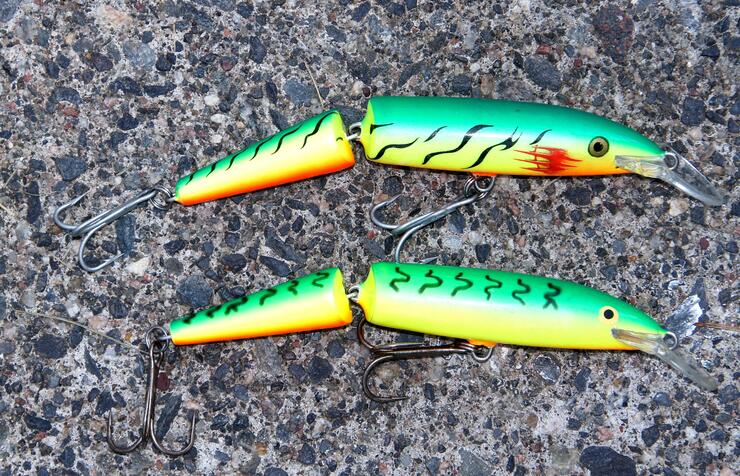
Salmon tackle should be on the heavier side of life. I'm not talking tuna action. An 8- or 9-foot rod with a baitcasting reel loaded with 15-pound monofilament is about perfect. The rod needs to be tough. Especially if you are using rod holders. I've had some very nice graphite rods blow up in holders when salmon took hold in the current. Being strong and flexible is good. Make sure your metal clips that attach the lures are top-notch as well. Salmon in the heavy current of the Nipigon will use their size to break you off.
For sheer thrills and action, chinook salmon fishing on the Nipigon River is tough to beat. The bonus payoff is on the barbecue, where that delicious wild salmon will make a lot of people very happy.
Recommended Articles
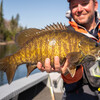
Stanley's Resort
Let the Sunshine In
Remote and Unique Lodges in Ontario

Fall Bass Class
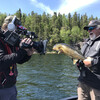
Ontario’s Fishing Gems: Algoma and Sunset Country
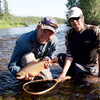
The Best Brook Trout Fishing

Take Someone Fishing
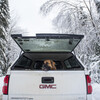
Ice Fishing With Fido
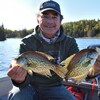
The Ontario Fall Crappie Hunt
When to Use Bright Lures and Dark Lures
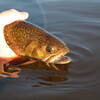
Top 10 Streamers for Ontario Brook Trout
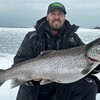
Ontario Brown Trout Fishing
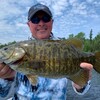
Don't Let the Name Perch Lake Fool You
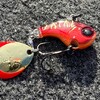
Wag Your Tail For More Walleye, Bass and Trout
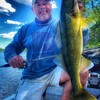
The 3 Best Baits For Northern Ontario Walleye

Big Basswood Lake Resort
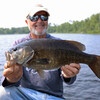
Smallmouth Bass in Sunset Country
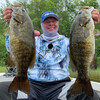
Small Lakes That Fish Big, Really Big Bass
